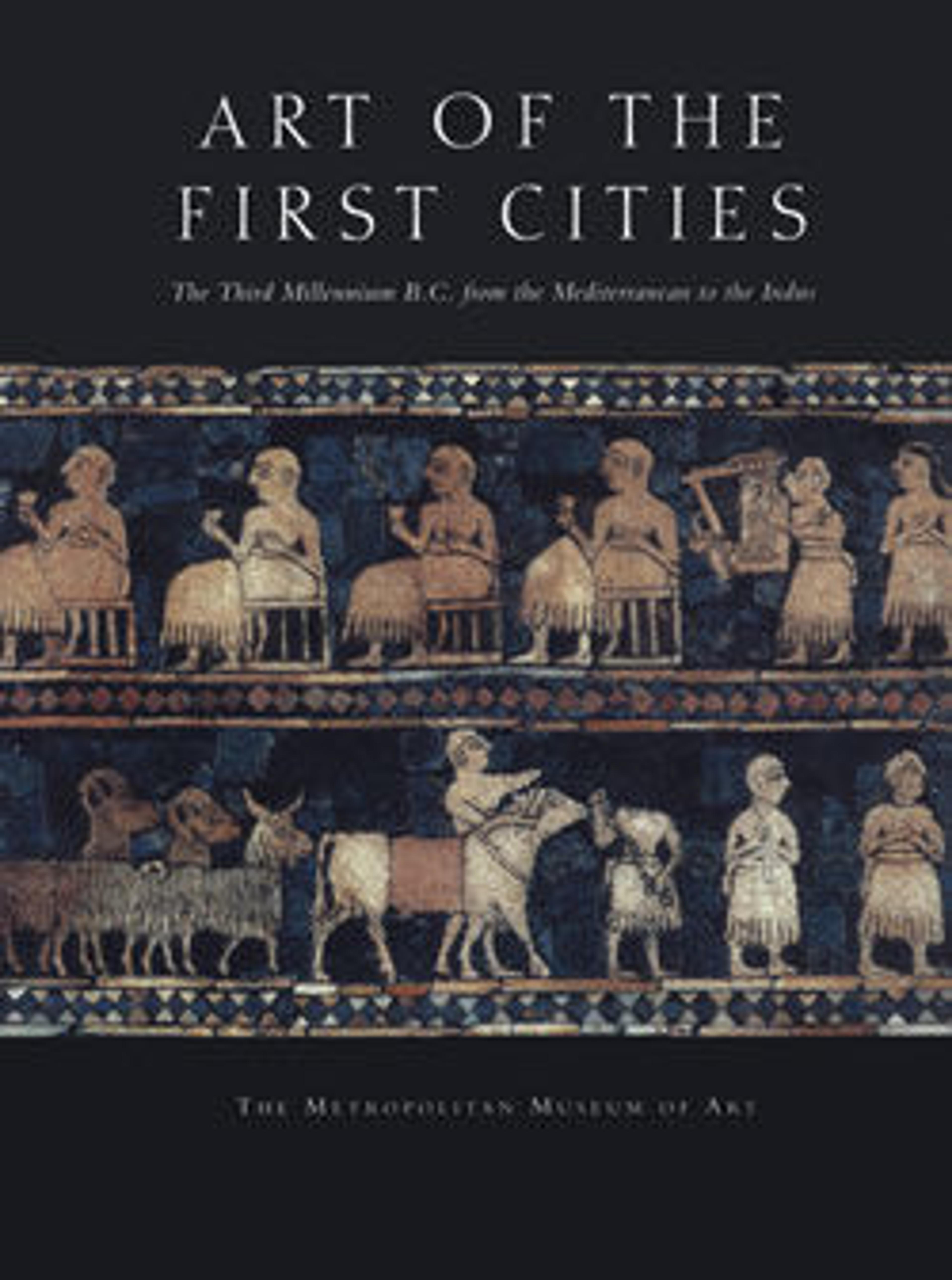Stele of Ushumgal and Shara-igizi-Abzu
Among the earliest written documents from Mesopotamia are records of land sales or grants, often carved in stone with associated images, perhaps for public display. The Sumerian inscription on this stele records a transaction involving three fields, three houses, and some livestock. Ushumgal, a priest of the god Shara, and his daughter are the central figures of the transaction, but because of the archaic script, it is not clear whether Ushumgal is buying, selling, or granting these properties. The smaller figures along the sides very likely represent witnesses to the transaction.
In addition to their importance to understanding the development of writing, these early land documents provide evidence that land could be privately owned in early Mesopotamia, although a significant proportion was still owned by the gods and managed by their temples. While this development is not surprising from a modern point of view, in antiquity it represented a momentous conceptual and cultural shift.
In addition to their importance to understanding the development of writing, these early land documents provide evidence that land could be privately owned in early Mesopotamia, although a significant proportion was still owned by the gods and managed by their temples. While this development is not surprising from a modern point of view, in antiquity it represented a momentous conceptual and cultural shift.
Artwork Details
- Title: Stele of Ushumgal and Shara-igizi-Abzu
- Period: Early Dynastic I
- Date: 2900–2700 BCE
- Geography: Mesopotamia, probably from Umma (modern Jokha)
- Culture: Sumerian
- Medium: Gypsum alabaster
- Dimensions: 22.4 × 14.7 × 9.5 cm (8 13/16 × 5 13/16 × 3 3/4 in.)
- Credit Line: Funds from various donors, 1958
- Object Number: 58.29
- Curatorial Department: Ancient West Asian Art
More Artwork
Research Resources
The Met provides unparalleled resources for research and welcomes an international community of students and scholars. The Met's Open Access API is where creators and researchers can connect to the The Met collection. Open Access data and public domain images are available for unrestricted commercial and noncommercial use without permission or fee.
To request images under copyright and other restrictions, please use this Image Request form.
Feedback
We continue to research and examine historical and cultural context for objects in The Met collection. If you have comments or questions about this object record, please contact us using the form below. The Museum looks forward to receiving your comments.
